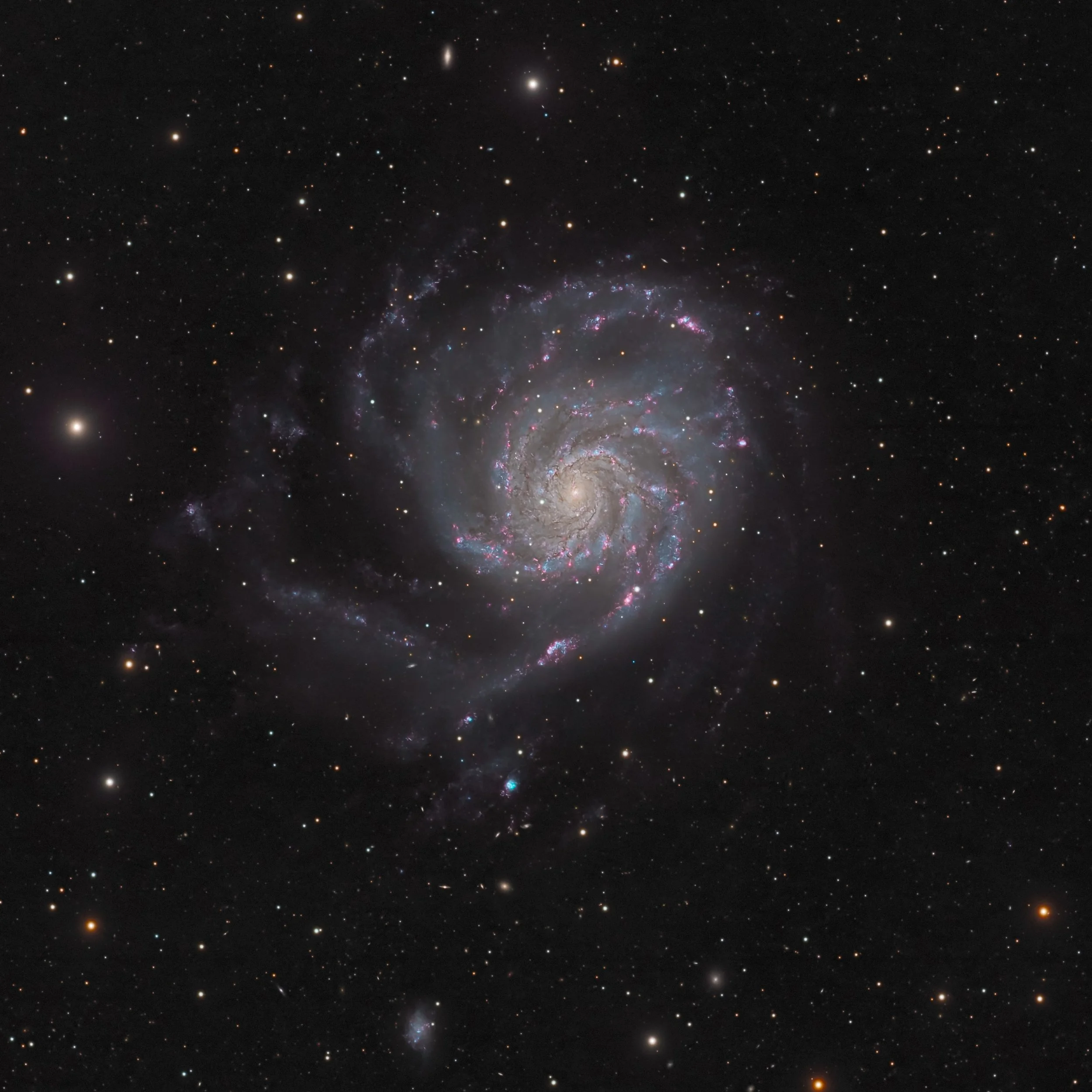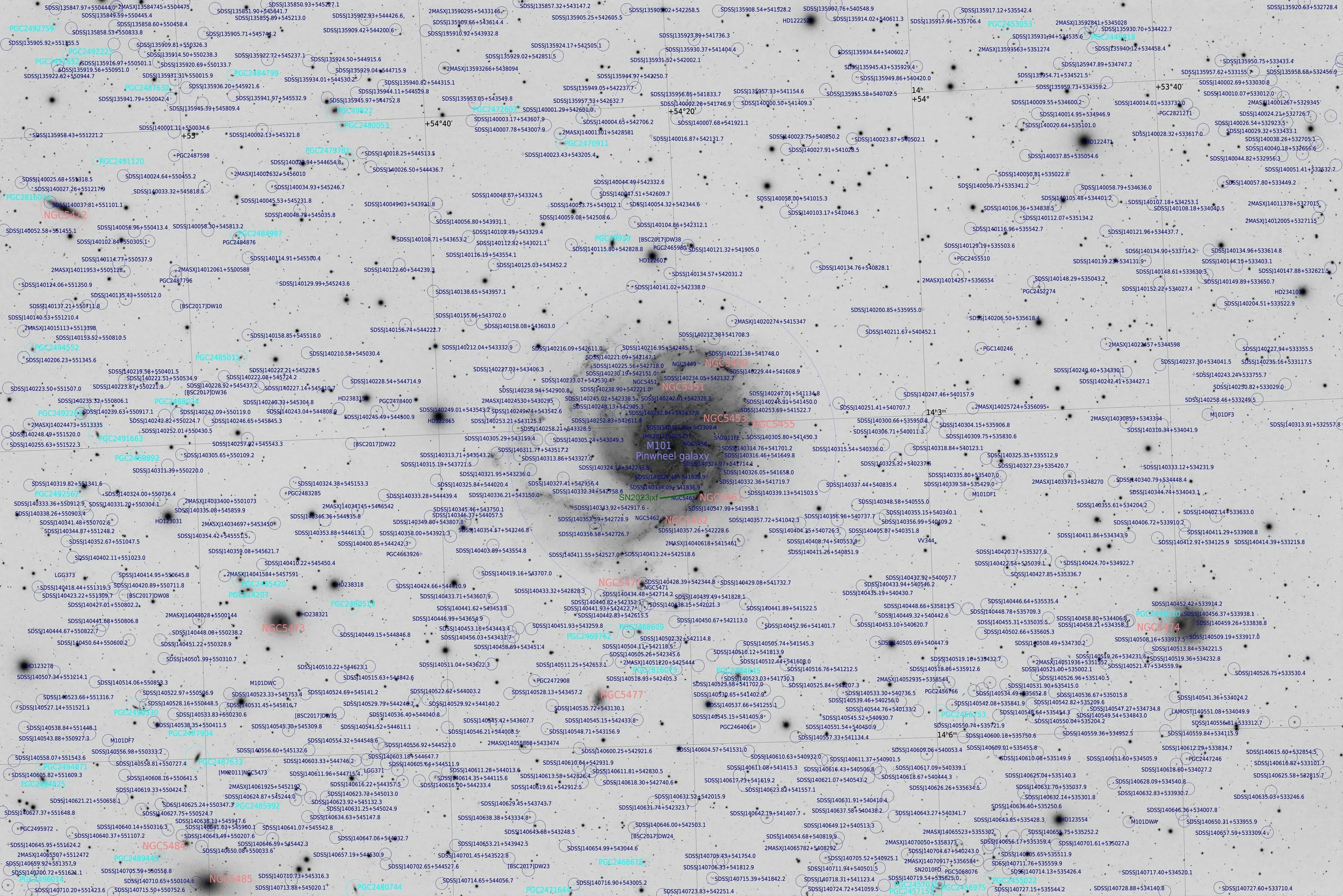M101, The Pinwheel
About the Subject
M101, also known as the "pinwheel" galaxy, is a very large spiral located in the constellation Ursa Major. It is roughly twenty-one million light years from Earth making it one of the closest large spirals. It is almost twice as large as our Milky Way, with a diameter of roughly 170,000 light years. Along with M51, the Whirlpool Galaxy, M101 was one of the first galaxies visually observed to have a spiral structure. That structure was first detected by Lord Rosse using a 72 inch diameter Newtonian reflector. M101 is estimated to have roughly one trillion stars, similar to the Andromeda Galaxy. M101 is undergoing a large amount of star formation which can be seen in the red/magenta H II regions scattered throughout the spiral arms. Each of these magenta areas represents a dense cloud of hydrogen gas has been ionized and lit up by the new, bright stars forming from the collapsing clouds of gas. The irregular shape of M101 was created from tidal forces during recent interactions with companion galaxies including NGC 5474, NGC 5477, both of which are visible in this image. It's these same tidal forces that are triggering the waves of star formation.
This image also shows supernova SN2023ixf located near NGC 5461 in one of M101's spiral arms. It is marked in dark green in the negative image provided. This supernova was first detected on May 19th, 2023 by an amateur astronomer in Japan named Koichi Itagaki. From looking at its spectrum, it was classified as a Type II core collapse supernova. The suspected progenitor star likely had a mass roughly fifteen times greater than the Sun. The peak brightness for this supernova was 10.8 meaning that at its brightest, the supernova was about 1/15th as bright as the entire Pinwheel galaxy--roughly 1.5 billion times brighter than the Sun.
Date, Location, and Equipment:
June 7-9, 2023, Rowe, NM, USA
Astro-Physics 305mm Riccardi-Honders Cassegrain @ f/3.8
Astro-Physics 1100GTO AE Mount with Absolute Encoders
QHY600PH Monochrome Camera at -10°C
Chroma 50mm x 50mm filters
RGB only
1h54mm Red, 2h10m Green, 2h2mm blue
6h6m total integration time
Software:
Astro-Physics APCC for mount control and advanced pointing model
NINA for autofocus, sequence of images, and camera control
PHD2 for guiding
PixInsight for calibration and all post processing
This is an RGB color image, correctly calibrated against a NASA stellar database using spectrophotometric color calibration using PixInsight. Very limited integration time was required to provide a nice portrait of the galaxy including the supernova.


